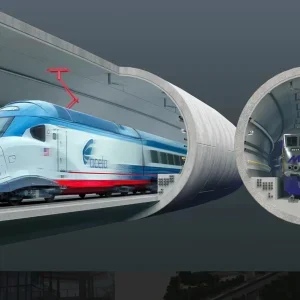Plans for the headrace tunnel on the Luhri hydropower project, in India, have shifted from having horseshoe-shaped cross-sections to circular, paving the way for TBM excavation.
Plans have also seen an increase in the size of the proposed powerhouse cavern as the project’s installed power capacity is increased.
Satluj Jal Vidyut Nigam (SJVN), a joint venture electricity company owned by the state of Himachal Pradesh, where the Luhri site is located, and the Government of India, has been undertaking early development work on the scheme. Over the last it intensified site investigation work under the early design development requested by the client, the state Government of Himachal Pradesh. The utility was awarded the development work in 2004 and last month signed a Memorandum of Understanding (MoU) to build the project by 2015.
Under the design development, SJVN has changed the headrace from a 10.5m wide horseshoe-shaped tube to a circular, 9m diameter bore. The utility has also significantly extended its length – from 29km to 38.1km.
While the tailrace tunnel is short, it has also been changed from the to a circular, 9m diameter tunnel.
The size of the underground powerhouse has changed, becoming longer but the height is slightly less and the width remains almost the same. The cavern is to be 156.4m x 23.5m x 44m compared to the earlier concept of 131m x 24m x 47m.







